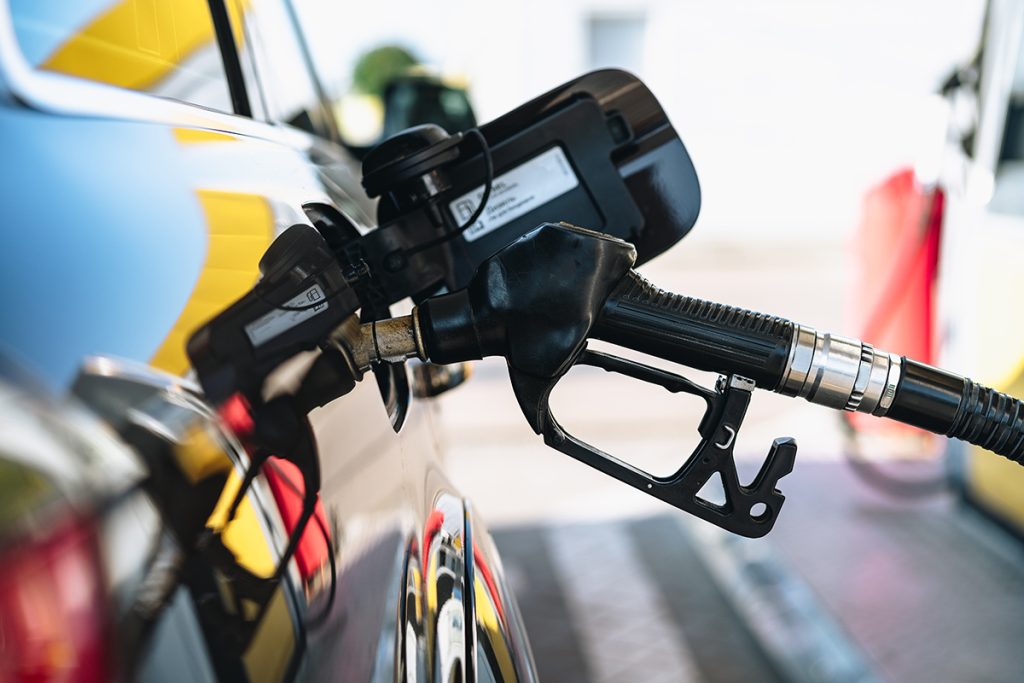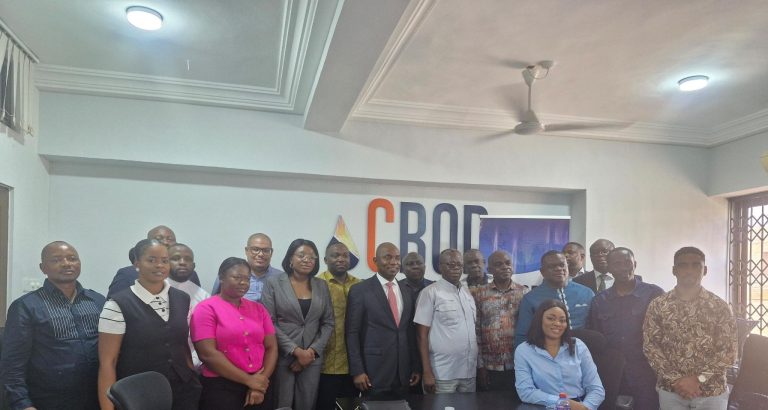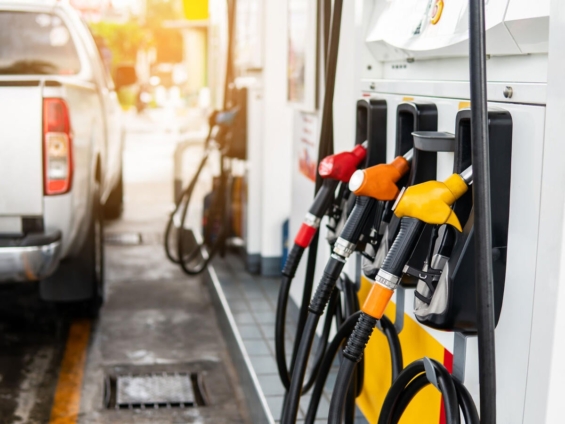Crude Oil and Refined Products Market Review and Outlook
Global crude prices rose by an average of about 1.38% in the first quarter of 2025 compared to the last quarter of 2024. Prices reached their highest point in February, with Brent spot prices soaring as high as $83 per barrel. CITAC Africa attributed this rise primarily to “the trade-war-provoking rhetoric and actions of the new Trump Administration in the United States.” The rise in crude prices during the quarter can also be attributed to a sharp decline in global stock levels, particularly in the US. Moreover, available data shows that OECD industry inventories of crude and refined products fell to their lowest levels for this time of the year since 2022. The U.S. Energy Information Administration (EIA) also attributed the rise in crude prices to the US Administration’s tariff war policies, which affected the supply chain dynamics within the oil markets, contributing to market volatility.
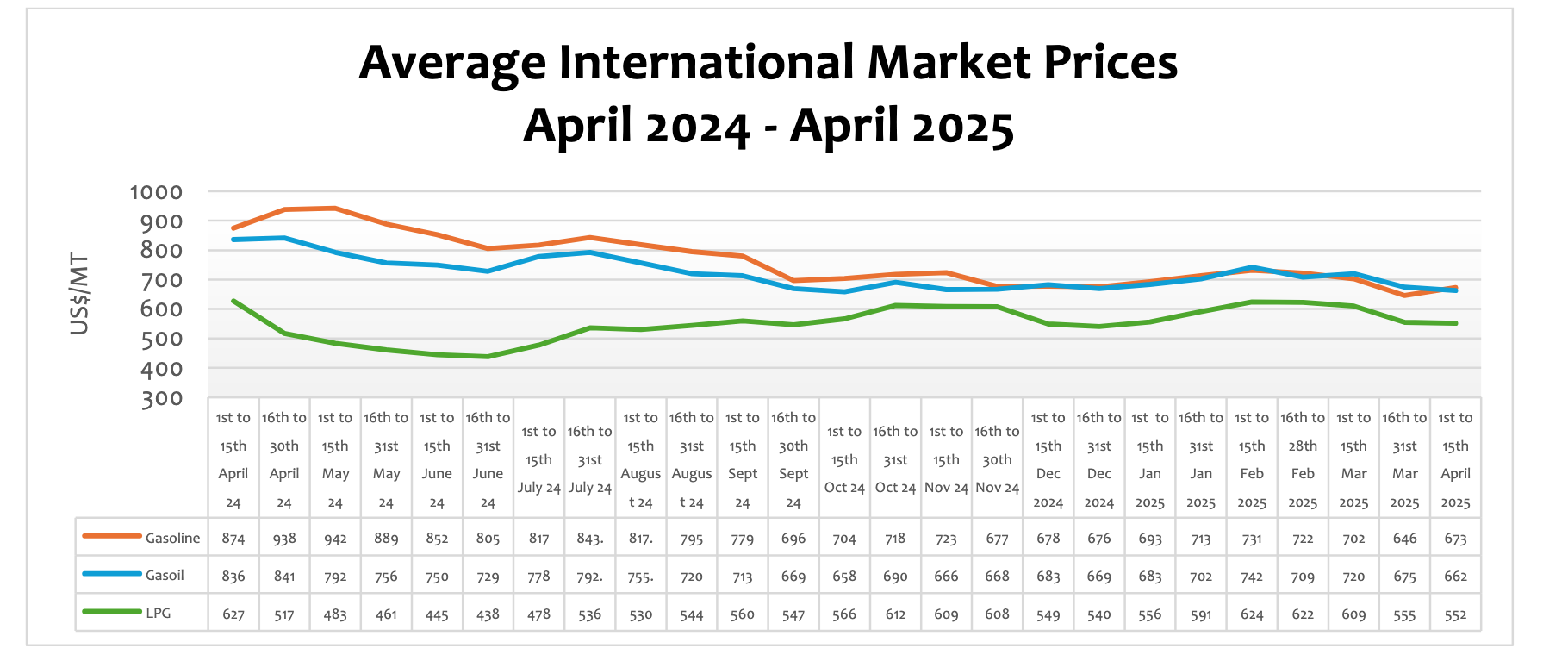
Notwithstanding, concerns over global demand notably in China, and rising inflationary pressures continue to push down international prices despite the significant tightening in global inventories.
It is expected that global crude prices will remain subdued in the second quarter of the year due to the geopolitical tensions and tariff impositions between the US administration and some of its major trading partners, threatening global demand. The US imposed new sanctions on various entities and vessels involved in shipping Iranian crude oil to China and announced 25% tariffs on all imports from Canada and Mexico, as well as a 10% tariff on imports from China.
On the supply side, the EIA expects US crude oil production to increase steadily over the next two years and to average 13.59mn b/d this year and 13.73mn b/d in 2026. This is expected to subdue the global price of crude and petroleum products in the coming quarter.
FuFeX30 and Spot Rates
The Fufex30[1] for the first selling window of April (1st to 15th April) is estimated at GHS15.8000/USD, while the applicable spot rate for cash sales is GHS15.6000/USD based on quotations received from oil financing commercial banks.
[1] The Fufex30 is a 30-day GHS/USD forward fx rate used as a benchmark rate for BIDECs ex-ref price estimations.
| SUMMARY REPORT OF BANK OF GHANA FX AUCTIONS TO BIDECs | ||
| Window | Percentage Offered | Auction FX Rate (GHS/USD) |
| 16th to 30th November 2024 | 28% | 16.2094 |
| 1st to 15th December 2024 | 27% | 15.5388 |
| 16th to 31st December 2024 | 26% | 14.8133 |
| 1st to 15th January 2025 | 25% | 14.7690 |
| 16th to 31st January 2025 | 26% | 14.9443 |
| 1st to 15th February 2025 | 20% | 15.4725 |
| 16th to 28th February 2025 | 23% | 15.4684 |
| 1st to 15th March 2025 | 24% | 15.5582 |
| 16th to 31st March 2025 | 23% | 15.5543 |
| 1st to 15th April 2025 | 24% | 15.5543 |
The BoG’s biweekly FX auction to BIDECs in the 1st to 15th April 2025 pricing window for the purchase of petroleum products was US$20 million, representing 24% of BIDECs’ bid. The FX rate at which the BoG auctioned to BIDECs rose from GHS14.7690 in January 2025 to GHS15.5543 per USD in the current window, representing an appreciation of 0.o2%. It is expected that the government’s fiscal policy measures as outlined in the 2025 Budget if implemented will stabilize the cedi and pump prices.
The Ex-Refinery Price Indicator (Xpi)
The Ex-ref price indicator (Xpi) is computed using the referenced international market prices usually adopted by BIDECs, factoring in the CBOD economic breakeven benchmark premium for a given window, and converting from USD/mt to GHS/ltr using the Fufex30 for sales on credit and the spot FX rate for sales on cash.
Ex-ref Price Effective 1st to 15th April March 2024
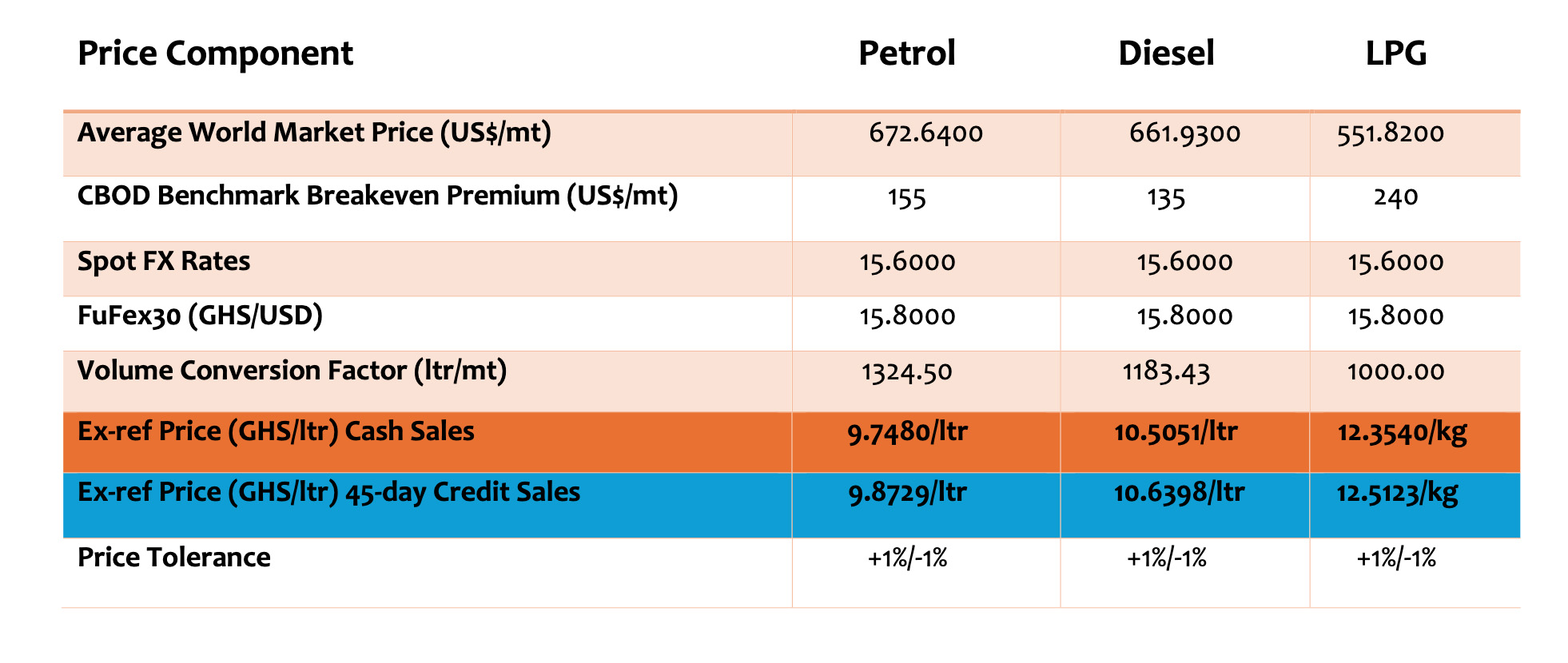
Taxes, Levies, and Regulatory Margins
Total taxes, levies, and regulatory margins within the 16th to 31st March 2024 selling window accounted for 21.48%, 21.05%, and 12.25% of the ex-pump prices of petrol, diesel, and LPG, respectively.
| TRM Components | Petrol (GHS/ltr) | Diesel (GHS/ltr) LPG (GHS/KG) | |
| ENERGY DEBT RECOVERY LEVY | 0.49 | 0.49 | 0.41 |
| ROAD FUND LEVY | 0.48 | 0.48 | – |
| ENERGY FUND LEVY | 0.01 | 0.01 | – |
| PRICE STABILISATION & RECOVERY LEVY | 0.16 | 0.14 | 0.14 |
| SANITATION & POLLUTION LEVY | 0.10 | 0.10 | – |
| ENERGY SECTOR RECOVERY LEVY | 0.20 | 0.20 | 0.18 |
| PRIMARY DISTRIBUTION MARGIN | 0.26 | 0.26 | – |
| BOST MARGIN | 0.12 | 0.12 | – |
| FUEL MARKING MARGIN | 0.09 | 0.09 | – |
| SPECIAL PETROLEUM TAX | 0.46 | 0.46 | 0.48 |
| UPPF | 0.90 | 0.90 | 0.85 |
| DISTRIBUTION/PROMOTION MARGIN | – | – | 0.05 |
| TOTAL | 3.27 | 3.25 | 2.11 |
OMC Pricing Performance: 1st to 15th March 2025
Pump price of petroleum products remained stable in the first quarter of the year despite the temporal surge in the first selling window of February due to the relative increase in international prices. International prices surged in February as a result of the imposition of sanctions and taxes by the Trump administration on Iran, Canada, and Mexico. According to CITAC Africa, “The potential for trade wars and supply chain disruptions, as well the outright inflation-fueling effects of new tariffs, gave rise to a bearish economic outlook”.
The cedi has since the beginning of the year remained relatively stable. The stability of the cedi has been largely attributed to the interventions of the BOG in the FX market. The stability of the FX has mainly contributed to the relative stability of pump prices in the first quarter. Compared to the last quarter of 2024, average pump prices of petrol and diesel rose by 7 and 3% respectively while LPG declined by 3%. The international price of petroleum products has also fallen significantly, partly contributing to the relative stability in the price of petroleum products at the pumps.
Even though the cedi depreciated by 19.2% against the USD in 2024 which resulted in the high pump prices despite the decline in international prices within the same period, the government has indicated its commitment to stabilize the macroeconomy and the cedi through urgent economic recovery programs to shore up foreign reserves and to build sufficient buffers to manage public debt servicing.
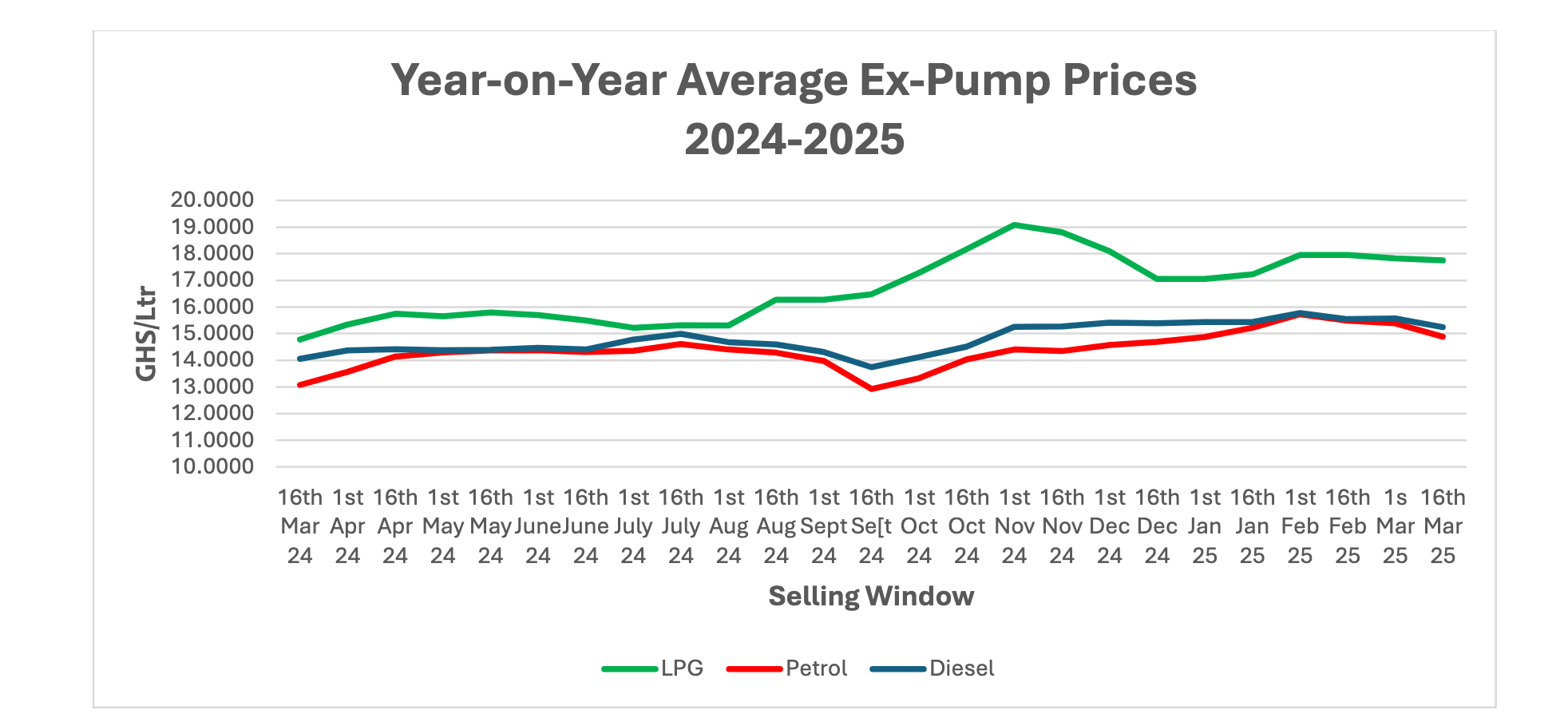
In the pricing window under review, pump prices of petrol fell by 3.26% compared to a reduction of 0.67% in the previous window. Pump prices of petrol are currently around 13.80% higher on a year-on-year basis.
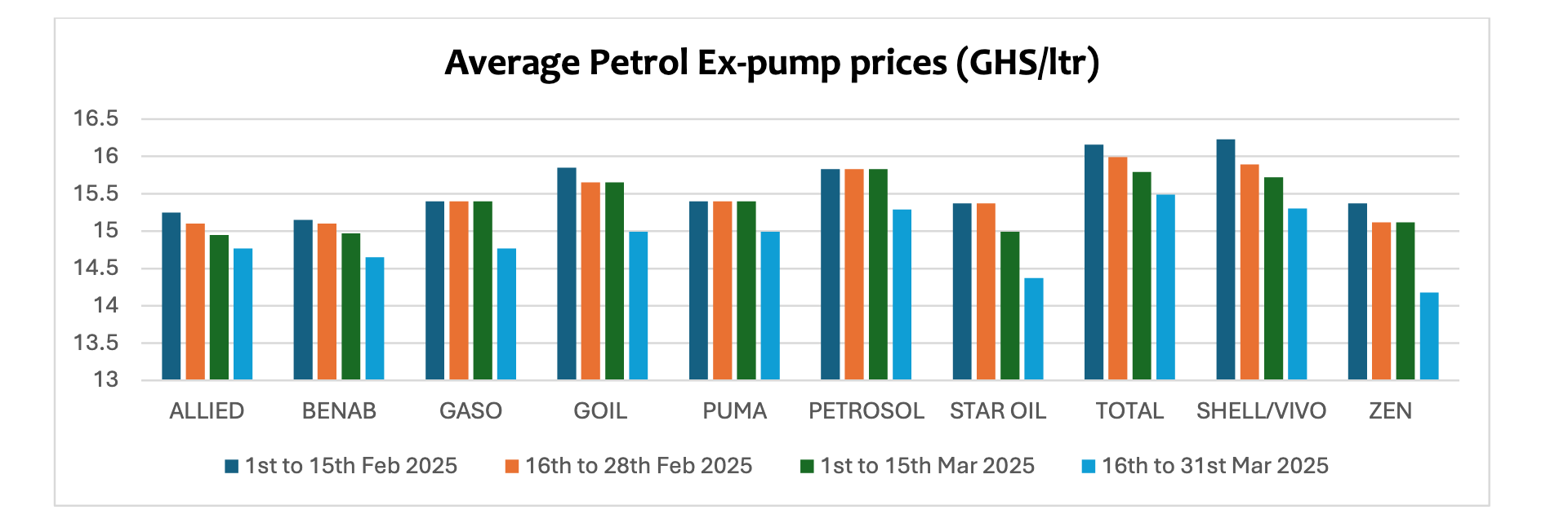
Pump prices of diesel declined by 2.02% after rising slightly by about 0.09% in the previous window. Pump prices of diesel are about 8.5% higher on a year-on-year basis and about 1.25% lower on a year-todate basis.
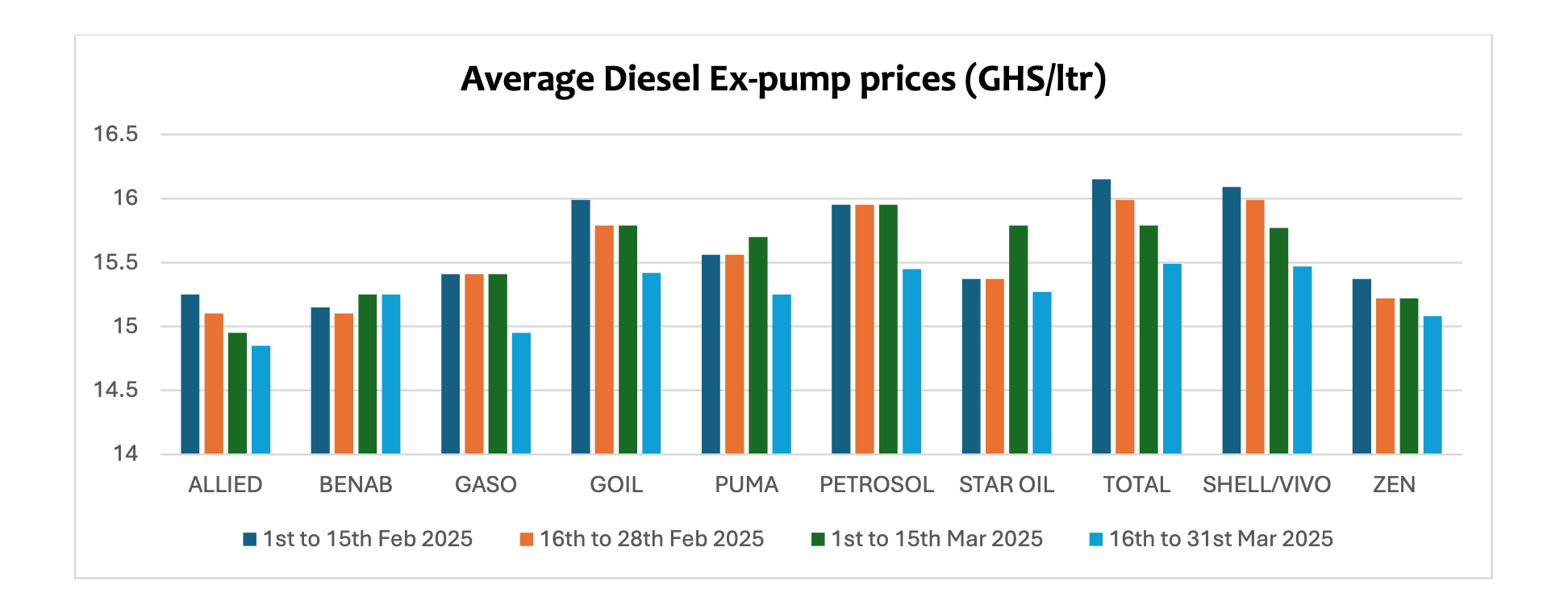
As global demand is expected to remain stable due to weak market sentiments, pump prices are projected to range above GHS13/Ltr. However, this projection is highly dependent on the performance of the cedi. The government has, however, indicated its commitment to continue the special FX auction to BIDECs to improve exchange rate stability and reduce imported inflation and fuel prices. These interventions will continue to firm up the cedi against its major trading currencies in 2025. We expect pump prices to decline by about 1% in the 1st to 15th April pricing window.

